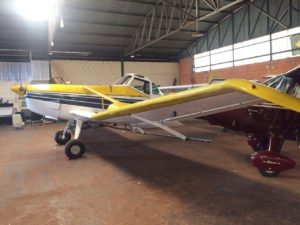January 31, 2019
Cause of Crop-Duster Crash Inconclusive
admincopa
In a Transportation Safety Board (TSB) report released this week, investigators were unable to determine what caused the crash of a Cessna A188B AGtruck in Saskatchewan last summer.
According to the TSB report, “the aircraft had struck the ground in a wooded area at a very shallow pitch angle with a high rate of vertical descent, likely in a left turn, and came to a rest facing a northwesterly direction. The aircraft had little forward speed and did not leave a wreckage trail. This type of surrounding damage is indicative of an aerodynamic stall from a low altitude.”
The Clayton Air Service-operated crop sprayer had completed a spraying mission on the afternoon of July 12, 2018, approximately 3.5 nautical miles east of Carrot River, Saskatchewan. The ATPL-rated pilot texted his company office at 15:00 to advise them that he had completed the work and was returning to the company’s base at Arborfield (CJM6). He also filed an electronic report to the coming, which included the prevailing weather conditions.
Not long after, a bystander heard an explosion and followed the smoke to the crash site before continuing on to summon help. The local fire and police services attended the scene where they discovered the pilot dead and the aircraft destroyed by a post-crash fire.
The ELT did not activate as it was damaged on impact.
The TSB investigators determined that the aircraft was in compliance with existing regulations and that there were no known defects or anomalies with the aircraft. The pilot, who had received his ATPL a year earlier, had a current medical certificate. He had logged close to 3500 hours of flight time of which 45 were on the Cessna 188B. Investigators concluded that the pilot was qualified and fit for duty. Weather conditions were determined not to have been a factor in the accident.

The complete report can be found here.
